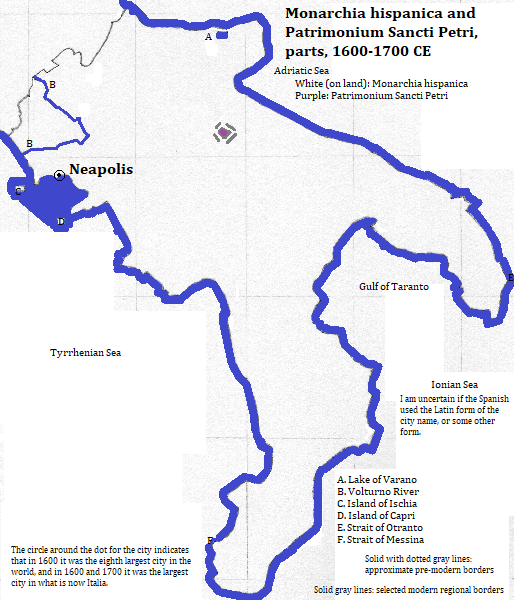
| To Duval Family Home Page | Europe |
| To Chris Home Page | Italia |
| To Earth (Geography Home Page) |
Napoli (locally called Napule)
UNESCO recognizes the long history of the city's center by conferring World Heritage status. They mention the Greek era (some wall remains); the Roman era (theatre, cemeteries and catacombs); the Castel Nuovo; and the Santa Chiara and San Lorenzo Maggiore churches.
The tallest building is Telecom Italia (423 feet, 1994).
The Napoli airport is one of the nation's busiest.
| Year | Population | Political entity |
| 1600 CE | 224,000 | Monarchia hispanica (Spanish Empire) |
| 1700 CE | 207,000 | Monarchia hispanica (Spanish Empire) |
| 1800 CE | 430,000 | Sicilia citra Faro in union with Sicilia ultra Faro (Kingdom of Naples) |
| 1900 CE | 563,000 | Regno d'Italia (Kingdom of Italy) |
| 2015 CE | 3,115,000 | Repubblica Italiana (Italy) |

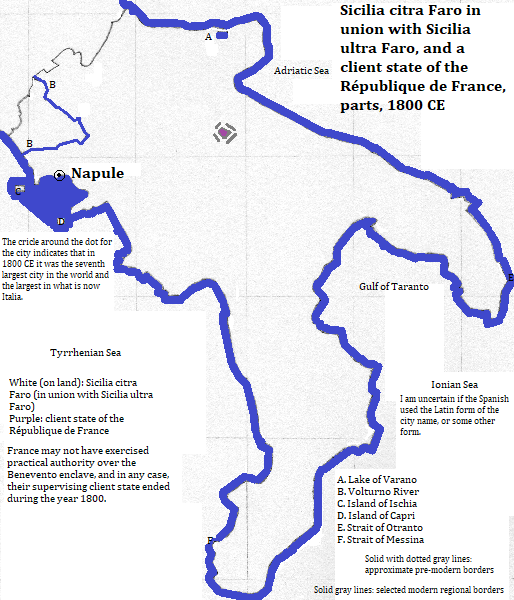
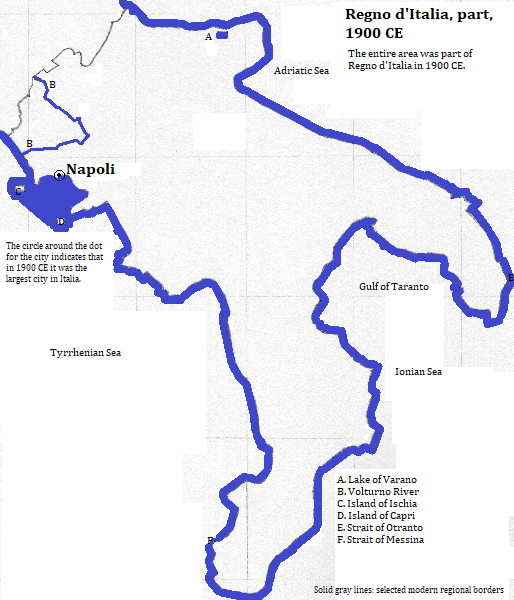
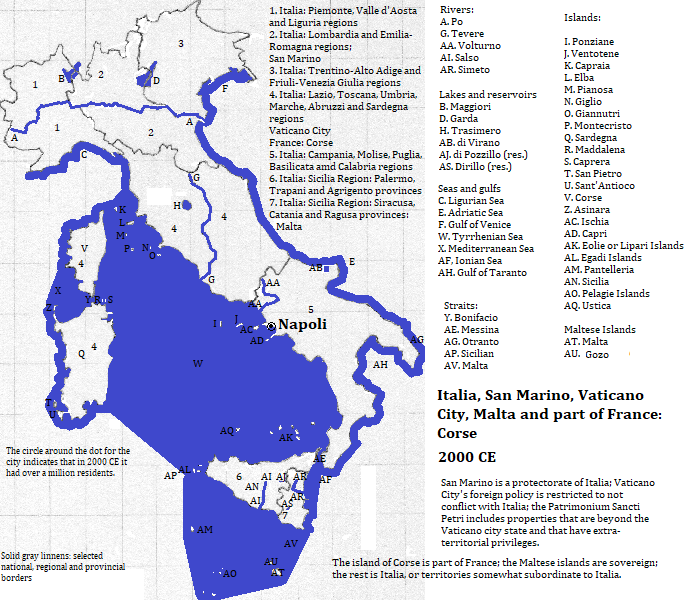
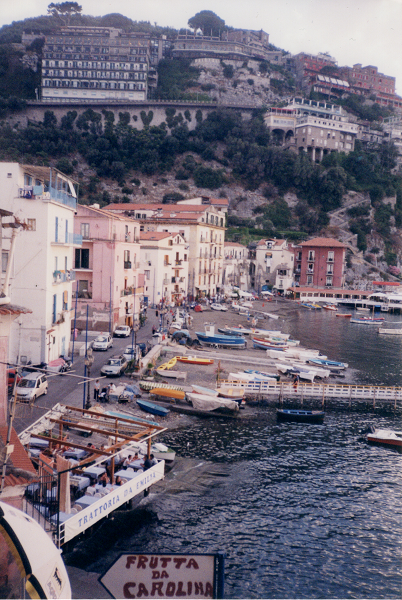
Port of Sorrento, province-level Metropolitan City of Napoli, Campania Region, Italia
1. Naples in English. It was called Neapolis in Latin.
2. 2011 figure from https://en.wikipedia.org/wiki/List_of_cities_in_Italy, accessed January 6, 2018.
3. 2015 metropolitan figure from the side bar of https://en.wikipedia.org/wiki/Naples, accessed January 6, 2018.
4. Italy in English.
5. https://en.wikipedia.org/wiki/Naples, accessed January 6, 2018.
6. Vesuvius in English.
7. Phlegraean Fields in English.
8. 2012 calculation from world-gazetteer.com, accessed February 6, 2013.
9. UNESCO, World Heritage Sites (Firefly Books, 2010).
10. Caserta is in its own province.
11. The site includes some silk works from the same period that are not in Caserta.
12. 2016 figure from the side bar of https://en.wikipedia.org/wiki/Pompei, accessed February 16, 2017. The city is locally called Pumpeje and is called by its old name of Pompeii in English.
13. Usually called by its old name of Herculaneum in English.
14. 2015 figure from the side bar of https://en.wikipedia.org/wiki/Torre_Annunziata, accessed February 16, 2017.
15. Emporis.com, accessed January 6, 2018.
16. https://en.wikipedia.org/wiki/List_of_the_busiest_airports_in_Italy, accessed February 16, 2017. My criterion for inclusion: above 3 million total passengers.
17. Tertius Chandler, Four Thousand Years of Urban Growth, 2nd ed. (The Edwin Mellen Press, 1987), "Tables of the World's Largest Cities." It was the eighth largest city in the world in 1600 CE and the seventh in 1800. It was the largest city in what is now Italia in those years and in 1700 and 1900.